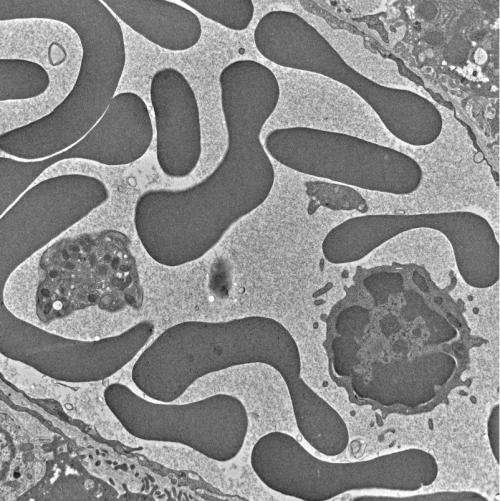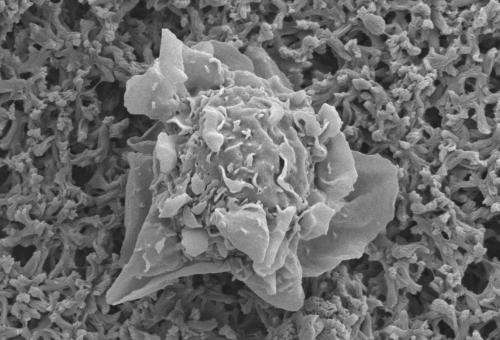The minimal microbe

There are approximately one trillion quintillion microbial cells on this planet. That's more than the number of stars in the known universe!
Microbes are not only numerous but also incredibly diverse, occupying extreme habitats where little else can survive—down a thermal vent in the deep ocean or bathing in a pool of near-boiling hot acid. They also perform a wide range of useful functions, such as reducing uranium to remove it from groundwater and degrading complex polysaccharides so we can digest our food.
Microbes are humanity's secret companions, playing silent but starring roles in global biogeochemical cycles, animal and human diseases, fuel production, bioremediation, food chains and agriculture. Many microbes dwell inside each of us. We are beginning to understand that microbes don't merely inhabit our guts to aid digestion; they have co-evolved in a symbiotic relationship with us. Gut microbes are now known to affect brain development, immune and liver functions, and adult behavior.
To study these microbes and the complex communities they form in the environment, Argonne and three other national laboratories (Lawrence Berkeley, Brookhaven and Oak Ridge) are collaborating to build a research tool called the Systems Biology Knowledgebase, or "KBase." Systems biology studies complex interactions in biological systems, such as the enzymes in a metabolic pathway. Studying these interactions involves vast amounts of interrelated data of different types. Currently, this data can't be easily combined; it exists in different formats in unlinked databases associated with different research tools. KBase aims to change this, but its goal is larger than data integration. The team seeks to advance research in two broad, important areas: plants and microbes.
Microbial research underlies many interesting areas of work at Argonne. Some studies search for useful functions that might be harnessed for human benefit; others focus on identifying the biological machines that drive the life processes of an individual cell, with the eventual goal of rewiring the cell to perform a useful task.
Biologists often learn by eliminating a portion of the cellular machinery and observing how that machinery responds. Argonne takes this approach to the extreme with an effort to synthesize a "minimal cell"—a cell containing only the biological machines that are essential for survival.

The first step is to compile what we actually know about the genomes of existing microbes. Argonne, the Fellowship for Interpretation of Genomes and the University of Chicago developed and maintain a database that is part of a resource called The SEED, which collects all known functions of different genes. Scientists use another tool called ModelSEED to show how genes and proteins with known functions interact to carry out all of the tasks that a cell must perform. Then they use the model to speculate on what is missing and to fill in the gaps, applying knowledge of evolutionary relationships to assign likely functions onto unlabeled genes.
Researchers also need to conduct lab work to verify the work done "in silico" (on the computer). Argonne scientists begin with a real microbe found in nature; in this case Bacillus subtilis, a common soil bacterium. Through trial and error, they knock out (KO) different genes and check whether the cell can still grow in a petri dish. If a microbe grows despite the KO mutation, they can label that gene as not vital for survival.
This is a simple approach, but it can get very complicated in execution. Imagine a car. If Argonne scientists applied their method of cell studies to understanding exactly how a car works, they would first try to build a "minimal car," and add extra features later.
They would begin with a whole fully featured, functioning car, then randomly remove a part and determine whether the car still functioned. If the removed part didn't keep the car from running and transporting passengers, then the scientists would say that part is not essential. When possible, they would record the role that part performed, and continue at random until every single car part has been removed and tested.
But as one might guess, this technique is not always straightforward. Some parts interact with or preclude each other. Some parts are at least partially redundant. For example, what if you only remove one tire? The car might still move, though admittedly not very well. But if you take away the axle rod, even if the tires are perfectly intact, the car won't be able to move. Genes are frequently interconnected in this way too, so researchers must keep track of their dependencies and interactions.
The environment of the car also matters. When you strip the car down to its most basic version, the result might not be a very robust vehicle. The number of features that you can strip off depends on where it is intended to travel. For example, do you only need the car to run on a very smooth and flat road? If so, you can probably safely toss a lot of unessential parts. But if you're expecting to drive uphill over obstacles, you may not want to toss the shock absorbers.
Likewise, the environment of a cell matters. You can take more out of a cell if it's destined for a friendly environment already supplied with nutrients in a ready-to-go form. But a cell placed in a nutrient-poor petri dish will need some metabolic equipment to be able to feed itself.
Breaking the cell down to the minimum components necessary and unraveling the interplay between genes, pathways, and proteins and phenotype is essential for understanding how cells work, being able to model cells and eventually reengineering cells to help solve critical problems. The more we find our lives linked to those of the diverse microbes around us, the more vital it becomes to understand them.
Construction of a minimal cell and sharing that data across the scientific community will accelerate solutions for everything from energy to human and animal diseases. By integrating and analyzing this kind of data, KBase will enable researchers to design and interpret their experiments more powerfully, and to quickly share those results and their interpretations. In the future, we hope that new functions will let users visualize data, create models and design experiments based on KBase suggestions to target the most critical work.
Provided by Argonne National Laboratory


















